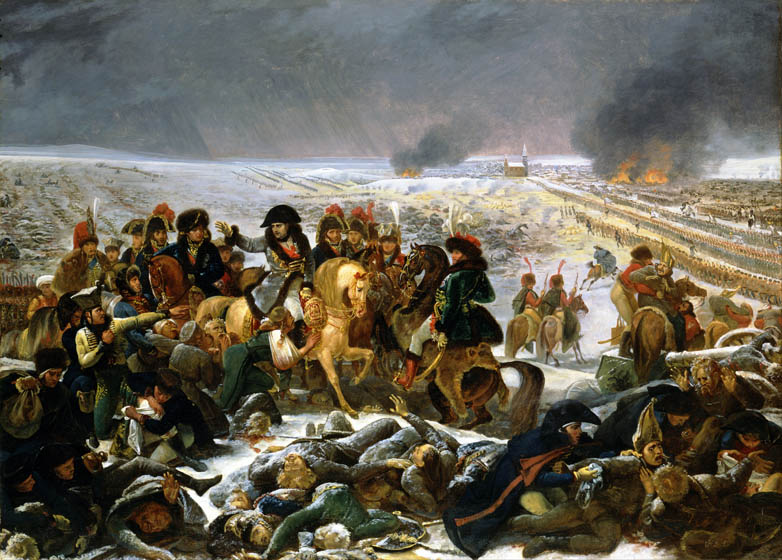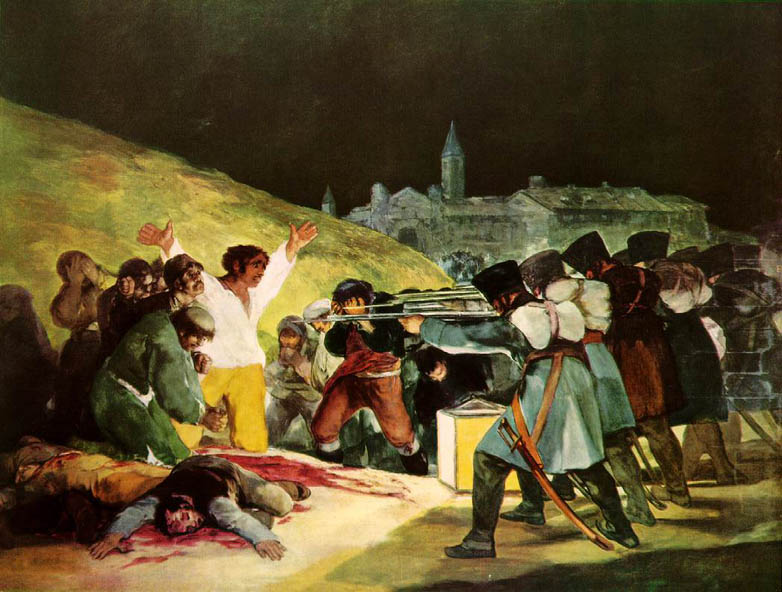
 Every now and then, on some blog or design group, someone brings up the question of designers unionizing or having some sort of certification in the hopes of assuring the public that we are professionals and adept at our craft. Can it be done, and if so, how?
Every now and then, on some blog or design group, someone brings up the question of designers unionizing or having some sort of certification in the hopes of assuring the public that we are professionals and adept at our craft. Can it be done, and if so, how?
The huge response to Monday's April Fools' prank on the introduction of certification in the U.S. shows that a lot of people are passionate on the subject.
For many years I volunteered to head various committees and sit on the board of directors for several design and illustration organizations and they have all made the question of unionizing a priority. The Graphic Artists Guild, for one, actually had meetings and outreach to established unions to see if they would either create a sub-chapter, so to speak, for creatives or at least support a small union of artistic types.
Several big unions did show some interest. The consideration of more union dues and, I suppose, the klout that designers, photographers and illustrators could wield was an attractive power base to unions who often rely on other unions for support in hard negotiations and strikes. Unfortunately, it just never went anywhere.
The question of certifications, including apprentice stages, journeyman and master titles, died out back when the black death an everyday concern and people didn't look oddly at those who said "forsooth." Both the Graphic Artists Guild and AIGA were both interested in certification possibilities. If creatives carried the assurance of an official certification, clients would receive only top notch service, pay rates could be controlled and there would be rules for those who sought to enter the field and grow through the certified levels until they were masters at our craft — living treasures, as the Japanese refer to their honored craftspeople.
How it would work

Eugène Delacroix - Liberty Leading The People (1830) Musée du Louvre, Paris
So, you graduate from art school and apply to the Artists Union. You start paying dues and are given an "apprentice" label so you can go out and find a staff position and study under a "master" design firm owner or corporation. If you choose to freelance, there is a minimum fee you have to charge clients. There are rules and regulations galore, backed up by the power of the union and the relationship with other unions who deal with shipping, trucking, electrical workers, etc.
For the practice of certification, you would apply and present your portfolio and a group of people would either accept you for certification as a professional level creative or turn you down and then you are not allowed to practice your craft as you struggle to pay back your student loans for four years of art school.
Clients would have to pay a set rate, pay on time and show respect to you as a unionized/certified professional. Also, companies like Adobe would have to offer their software at a lower rate because the union may not agree the cost is fair. Unionization would also strengthen copyright protection. No longer could a client say, "I found this on the internet, use it for my web site!"
Moose and Rocco would certainly help that client find his checkbook… and quickly!
Why it won't work

Antoine Jean Gros - Napoleon on the Battlefield of Eylau (1807) Musée du Louvre, Paris
First of all, no beginner can afford union dues on top of everything else one has to pay in life without having an income start immediately (although some unions defer joining for 90 days after starting work). Another consideration is how would union membership be enforced? The old fashioned way of breaking heads and concrete loafers? Strikes held against any business who hired non-union personnel? Laws passed by a legislature?
Let's say Robert and Roberta both graduate from the same class in art school. Both decide they want to freelance.
Robert joins the union and now has to tell clients that although he's just starting out, he gets a minimum of $$$$ per hour and the client must sign a union contract. How do you think that will go down? Robert doesn't make enough to eat, pay rent and pay his union dues.
Roberta decides she's not going to join the union. She does a $50 logo for Luigi's Pizzaria at the corner of her block but Robert finds out and turns her in, to the union. Roberta is accidentally hit with a piano while she takes a bath and her hands and arms are broken. Meanwhile, Luigi finds a stromboli in his pizza oven that is stuffed with mozzarella, peppers, onions and his daughter's kitten's head. Then Luigi slips on some olive oil and crashes through his front window, across the sidewalk and into oncoming traffic. Oops!
Would non-union creatives really face this kind of stopping block to practicing their craft? Would little businesses like Luigi's face high rates they can't afford but have to pay or their tomato sauce doesn't get delivered, their electric outlets spurt out sparks and fire and customers are afraid to cross a picket line?
Would art schools abide by the idea of union control and certification? Most art schools have a realistic placement rate of 20% of graduates working in or closely with the field (they claim the percentage is higher but think about how many of your alumni peers are working as designers and such and not as art store clerks and photocopy technicians at the local Quickcopy). Would they deal with 80% of graduates filing law suits and demanding their tuition back? Would they be more selective of entering freshmen, assuring only the best of the best can study design? Business is business and the rise of for-profit "art schools" such as the Art Institutes, DeVry, Phoenix University and the Academy of Art (online, if you can hold a straight face about online art schools teaching anything about design and art), has proved studying for a career in design is an in-demand business.
A Facebook designers' group had an interesting thread recently. The question was posted in response to a poorly typeset image of an alleged Glaser quote, "computers are to design as microwaves are to cooking."
A member asked if anyone else had heard of Milton Glaser saying he hated computers. The responses were ponderous but as Glaser was a former teacher of mine, I had to answer that he did indeed say this but it was not the computer as a tool he hated, but as a crutch to those who lacked talent and ability. It was after all, just a tool, like an Exacto knife is a tool but doesn't know where to make the needed cuts.
Merely learning software that drags and drops images and type is not design, although it is the reason many people believe they have design ability. Hence, the major weakness of for-profit art schools, online art schools and underachieving students who believe it can be done for them by a machine with lots of functioning buttons may be the reason so many have spoken about bolstering up an industry of shrinking talent with the strength of a union or weeding out post-graduates with a certification process.
Who else gets left out?

Francisco Goya - El tres de mayo de 1808 en Madrid (1814) Museo del Prado, Madrid
As aggravating as those Facebook friends are when they piss and moan about the design industry between daily posts about their five hours of gardening, pictures of the fabulous dinners they cooked for their spouse and the pictures posted from their sixth vacation of the year, they do sometimes create some great design work (yes, some not so great, but let's not get petty). I believe a friend of mine actually posted a design she did this year so she could still list herself as a graphic designer. Well, she didn't show the design but she said she did one and I believe her. I'm sure the heavy metal band down the block from her was quite pleased with their new logo or flyer. With a union or certification, is she to be omitted from the ability to call herself a designer or give away free work so she can hold her head high at creative meetings in town? Isn't the silent contempt and snickering from peers who work as professional designers punishment enough?
Does the noob who you think will just never have "it" get left lying in a muddy ditch by the edge of town, awaiting a mercy bullet in the head or are they given a chance to grow and evolve their design skills in a free market?
Does Billy's mom or dad, who made a decision to stay home and raise a family instead of pursuing a full-time design career, opting for the occasional school flyer and birthday party announcement get their legs broken while running the kids from ballet lessons to piano recitals to soccer practice?
All of this was part of the discussions about unionizing and certifications but aside from twenty levels of membership, no one could ever really focus on an answer to who is professional and whom is not, nor could any practical lines between areas of practice and dedication be drawn. Yet, it would be discussed every now and then.
Why does this continue to come up?

Pablo Picasso - Guernica (1937) Museo Reina Sofia, Madrid
Why do creatives continue to ask the question of forming a strength in numbers organization. Aren't the assorted artists' organizations enough? Obviously they aren't but imagine business without them!
Is it frustration with hearing the never ending stories of people accepting $50 for doing a logo or the expansion of design contest sites? Is it the social morals that tell us we shouldn't strangle those we feel make us look less professional and more like a rabid pack of artsy-types that can't add and usually cry at the drop of a hat?
It's not just us. I overheard two plumbers talking the other day about how their clients always argue the price, ask for cutting corners, change their minds mid-job and hide once it's time to pay their final bill. This is the life of any independent business person no matter what they do or what service they provide.
The truth is, we have the power to say, "no!" We can turn down ridiculously low offers. We can protect ourselves by using a contract and properly placed payments upfront and with milestones. We can learn how to deal on a professional level with clients who understand and appreciate what creatives can truly do for their business.
Let those part-timers do the $50 jobs, the metal bands down the block trade a bag of weed for design work while they wonder why there are no history books that include the steampunk era of industrialized England, the design contests serve small businesses and individuals who see only price and not purpose and let those who can't survive as full-time freelancers fade away as Darwin outlined for the survival of the fittest.
In the end, it comes down to our own abilities and desire to be the best we can, both in design and business. No union or piece of paper or any amount of hand holding will make us stronger. It only serves to help those less dedicated and less talented elevate themselves through strong-armed methods that, in the end, will only stifle us and create a glass ceiling to those who can go far beyond the rules and regulations any organization can provide.
Does your country have any sort of certification or union? Has it helped or hindered you? Do you think a union is the answer for the creative industry? Let us know in the comments.
Featured image © Weegee/International Center of Photography














